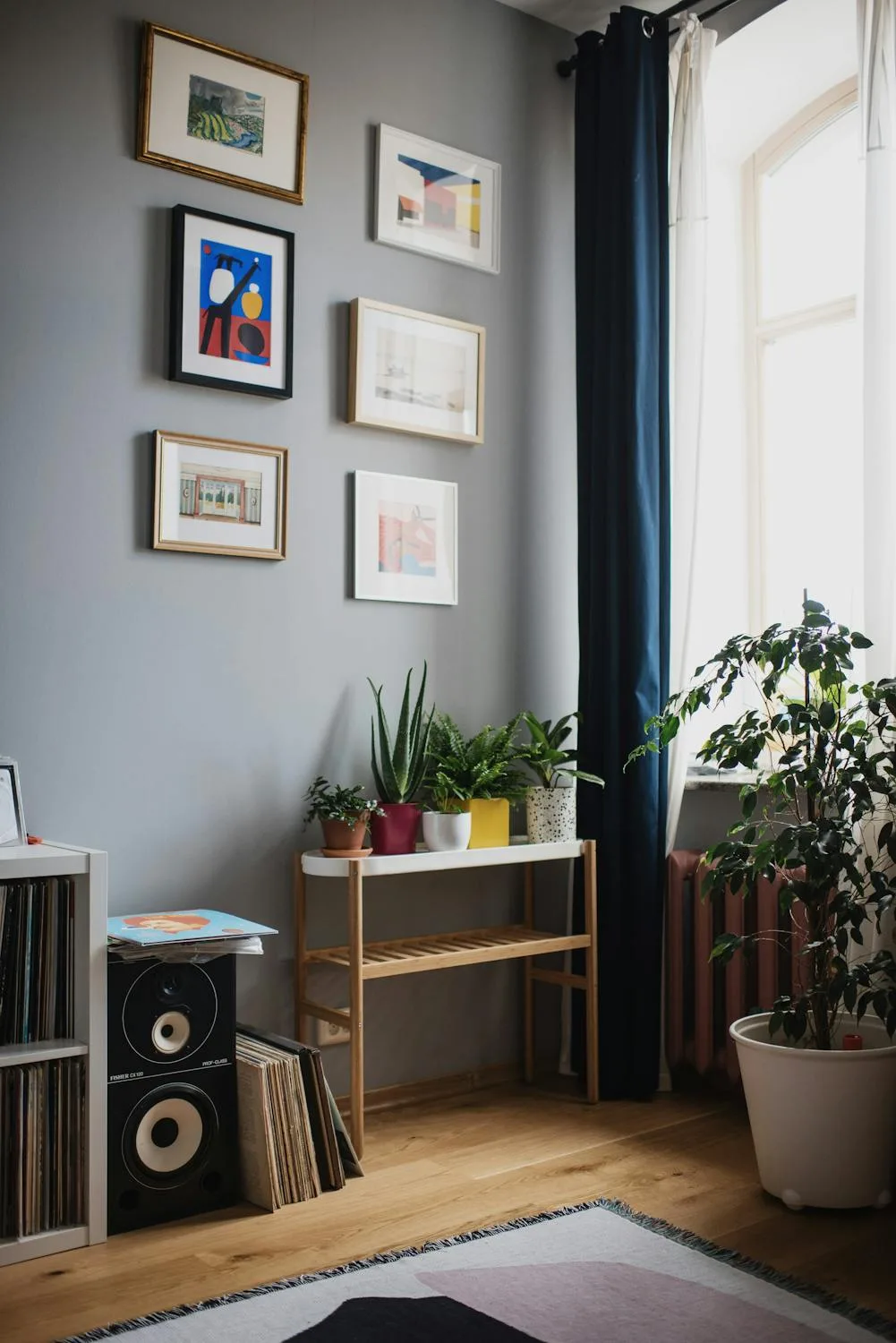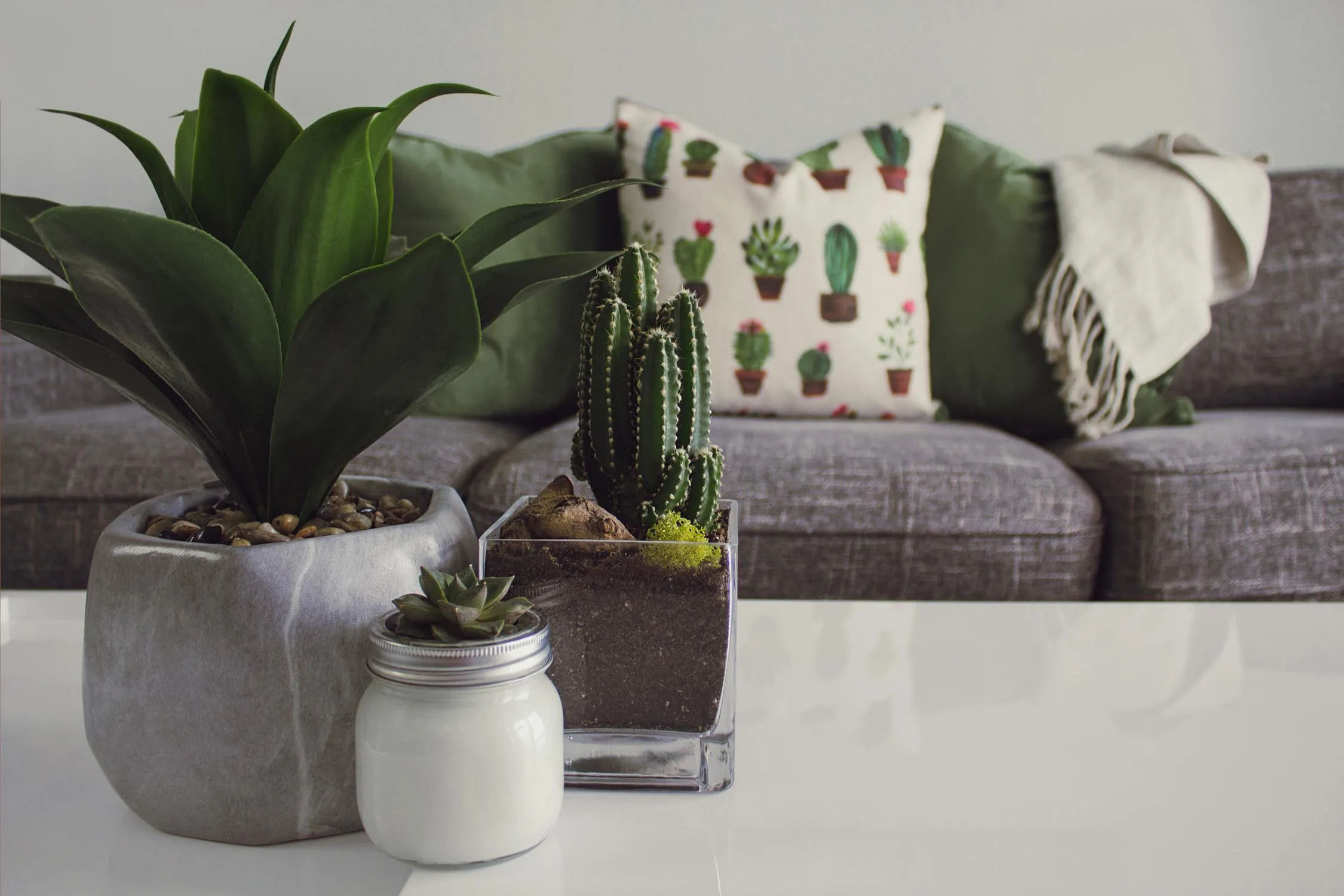Table of Contents
Why Faux Greenery Belongs in Every Modern Home
Artificial greenery is transforming interior design, offering the calming aesthetics of nature without the responsibilities of live plant care. It’s ideal for homeowners who crave a peaceful, curated environment but don’t have the time or light conditions to support real plants. Today’s faux greenery isn’t the plastic ivy of the past — it’s textured, multi-tonal, and remarkably lifelike.

Incorporating faux plants into your decor not only boosts visual appeal but also contributes to a serene, grounded atmosphere — especially in spaces that need a touch of life but lack natural sunlight. With the right styling, artificial greenery can elevate a space just as well as the real thing.
Advantages of Decorating with Faux Plants
Why do so many design-forward homes use artificial greenery? It’s simple: faux plants are beautiful, consistent, and virtually maintenance-free. They eliminate the stress of watering schedules, lighting issues, and plant replacements.
- No Maintenance: Say goodbye to dead leaves and daily watering.
- Always Allergen-Free: Great for households with sensitivities.
- Cost-Effective: One-time purchase with long-lasting impact.
- Flexible Placement: Looks great even in dark corners or windowless rooms.
Need some guidelines? Our article on essential faux plant dos and don’ts covers the best practices for realistic displays.

Faux greenery can also go where living plants can’t — making it an ideal solution for offices, basements, or rentals with limited light or airflow.
Picking the Perfect Faux Greenery for Any Space
Every room benefits from the right type of plant. The key is choosing artificial greenery that complements the room’s design and scale. Small plants work well on bookshelves or bathroom counters, while larger statement trees can anchor a living room or entryway.
- Assess the environment: Open space? Narrow shelves? Select accordingly.
- Style-matching: Choose modern or rustic plant styles based on your decor.
- Balance scale: Avoid overwhelming a room with overly large pieces.
If you’re unsure where to start, browse our list of realistic artificial plants to find your perfect match.
The right plant — whether bold or minimal — can finish a room’s look with style and simplicity.

Styling Artificial Greenery to Look Real
Even the best faux plants need thoughtful placement to look natural. The trick is blending them into your decor in a way that mimics how you’d treat a living plant. Strategic styling can turn a basic faux plant into a stunning decor feature.
- Layer with texture: Mix faux greenery with wood, linen, or ceramic accents.
- Vary shapes: Use tall, spiky plants next to round-leaf styles for realism.
- Natural positioning: Place near windows or in planters to create the illusion of growth.
Want fresh ideas? Don’t miss our roundup of decor tips for styling artificial plants on shelves.

Blending different styles and textures makes your greenery feel curated and lived-in — not staged.

Creative Ways to Use Faux Plants in Every Season
Artificial greenery isn’t just a static design choice — it’s incredibly flexible. You can use it to reflect the changing seasons, holidays, or even just your mood. The trick is choosing neutral base greenery and swapping in decorative accents throughout the year.
- Spring: Add faux tulips or pastel ribbons to basic eucalyptus garlands.
- Summer: Pair monstera leaves with seashells for beachy vibes.
- Fall: Mix in faux acorns, mini pumpkins, or orange leaves for warmth.
- Winter: Embellish garlands with pinecones, fairy lights, or holly berries.
Find more seasonal ideas in our plant decor guide — it’s full of adaptable styling tips.

Swapping accessories on a core greenery base saves money and storage space while keeping your decor fresh all year long.
Integrating Faux Greenery with Modern Interior Design
Modern design loves clean lines and minimal decor — but it can feel cold without natural elements. Artificial greenery adds a layer of organic texture without interrupting the aesthetic. Use structured plants like sansevieria or a faux fiddle leaf fig to introduce balance and vertical interest.
Try combining greenery with matte finishes, black metal frames, and neutral-toned furniture. This blend creates warmth and softness, making a stark space feel lived-in. And because faux plants don’t need water, they’re perfect for wall shelves, bookshelves, or high spots where real plants would struggle.

Strategic placement and repetition of greenery can unify a space while adding depth. It’s functional, stylish, and timeless.

Artificial Greenery in Small Spaces and Apartments
If you live in a small space, faux greenery can be your best friend. Unlike live plants, they don’t demand light or airflow, making them ideal for tight corners, dark hallways, or compact bathrooms. Small trailing vines or upright succulents can fill empty areas without cluttering them.
Consider wall-mounted planters or macrame hangers to get greenery off your surfaces. This keeps your space feeling open while adding personality. A tall faux palm in a bedroom corner can even make the ceiling feel higher — a smart visual trick in tight layouts.

In rental homes or apartments where nails or heavy planters aren’t an option, artificial greenery gives you flexibility without risk or rules.

Conclusion: Why We Love Artificial Greenery
Faux greenery has become a design essential for good reason. It’s versatile, affordable, realistic, and easy to maintain. With today’s incredible realism and variety, artificial plants can transform even the simplest room into a vibrant, inviting space.
At FindGreenery, we’re all about empowering you to decorate with confidence — using products and ideas that fit your lifestyle. For more decorating tips and plant inspiration, visit our blog or follow us on Pinterest and Facebook. You’ll find everything you need to turn your home into a calming, green retreat — no watering can required.





Leave a Reply
You must be logged in to post a comment.